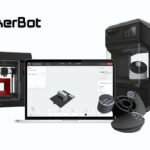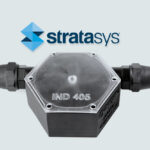ASIA ELECTRONICS INDUSTRYYOUR WINDOW TO SMART MANUFACTURING
Stratasys' Tool to Surge More Reliable 3D Printing
In collaboration with Materialise, Stratasys Ltd. has announced the launch of the Stratasys Neo® Build Processor for Investment Casting. Accordingly, the unique solution can accelerate the production of high-quality investment casting master patterns.
This new build processor, developed for Stratasys Neo®450 and Neo®800 stereolithography (SLA) 3D printers. Thus, offering up to 50% faster file processing. Moreover, it also offers significantly enhanced print speeds. Thus, streamlining the 3D printing workflow for manufacturers and service bureaus in the aerospace and other demanding industries.
3D printing master patterns can reduce the investment casting production time from weeks to days. Therefore, potentially resulting in up to 75% time savings compared to traditional methods of manufacturing. This includes wax mold and CNC machining. The ability to rapidly produce intricate designs that were previously unachievable with conventional techniques opens up new possibilities for innovation in part design and functionality, specifically with small-series production runs.

Exceptional Metal Castings
The Stratasys Neo Build Processor for Investment Casting is particularly beneficial for manufacturers in aerospace, automotive, and industrial sectors. Specifically, where speed, precision, and cost-effectiveness are paramount. Combining Somos® WaterShed® AF resin, Neo SLA technology, and advanced Materialise software with the variable layer thickness feature. It produces highly accurate 3D printed master patterns requiring minimal finishing. This streamlined process can yield exceptional metal castings in record time.
“This new build processor advances our mission to provide faster, more efficient solutions for producing high-quality master patterns,” said Rani Hagag, Chief Health Care and Consumer Business Officer at Stratasys. In addition, Hagag said, “Partnering with Materialise exemplifies how Stratasys collaborates with industry leaders to drive innovation and help our customers achieve their most challenging production goals with greater speed and precision.”
Materialise’s NxG Build Processor is a configurable software that translates large and complex 3D design files into 3D printable instructions, optimizing the 3D printing process from start to finish.
Enhanced Capabilities
Faster File Processing and Printing Speeds
It aims to achieve quicker turnaround times with faster processing and print speeds by offloading computational tasks to the build processor. Thus, optimizing file preparation without compromising part integrity.
Improved Workflow Integration
It streamlines workflows and reduces the learning curve for new users with a processor that integrates seamlessly with Materialise’s Lattice module and Stratasys’s Titanium™ software for Neo systems. Therefore, minimizing human error.
Superior Part Quality
Enhance surface finish and reduce post-processing time with advanced variable layer thickness options that produce stable, high-quality master patterns.
Customizable Build Parameters
Optimize production with customizable parameters for geometry, supports, and lattices, leading to faster scanning and improved overall productivity.
“Our collaboration with Stratasys focuses on creating seamless integrations between software and hardware to make AM adoption more effortless for our customers,” said Udo Eberlein, Vice President Materialise Software.
In addition, Eberlein said, “With the NxG Build Processor for Stratasys Neo printers, we enable a broad set of applications but also unlock new possibilities for niche applications like investment casting. Here, the flexibility of additive manufacturing meets the reliability of metal casting processes that have been refined over thousands of years. This collaboration helps improve processing speed and print productivity. However, is about more than just advancing technology; it’s about empowering industries to push the boundaries of what they can achieve with AM.”
11 September 2024




